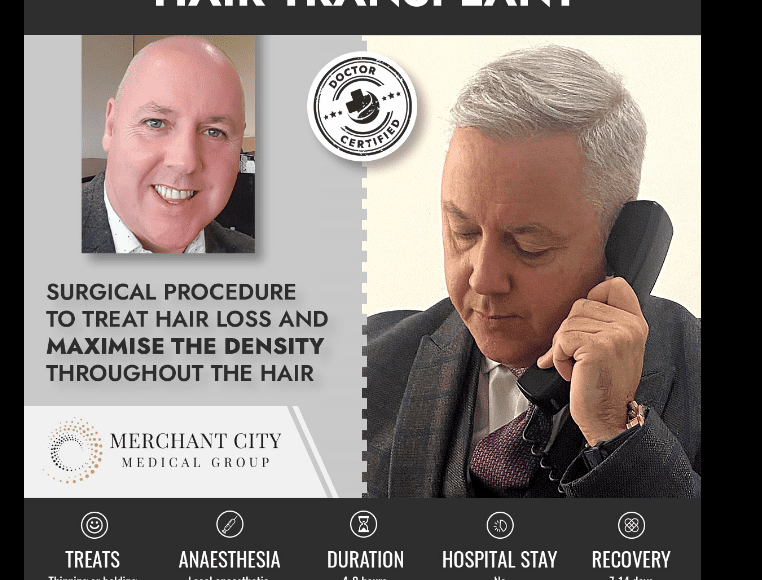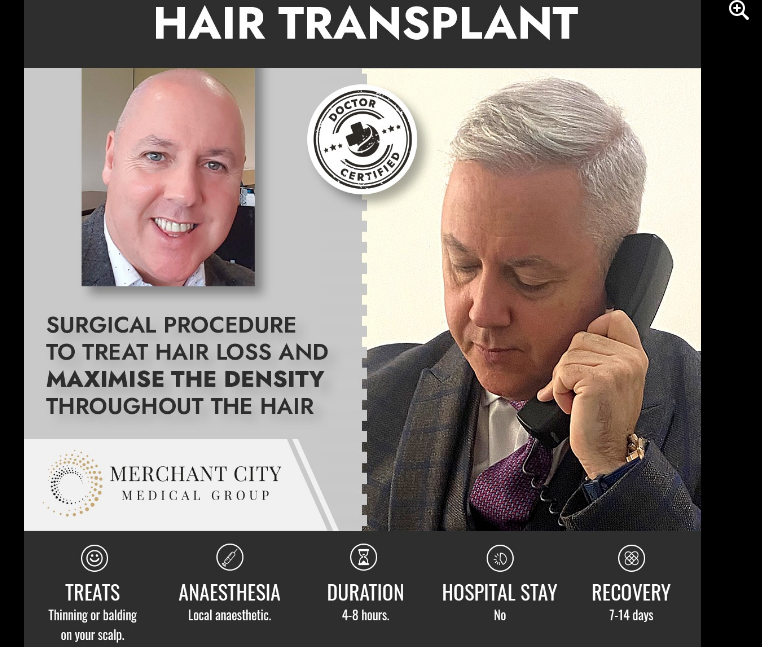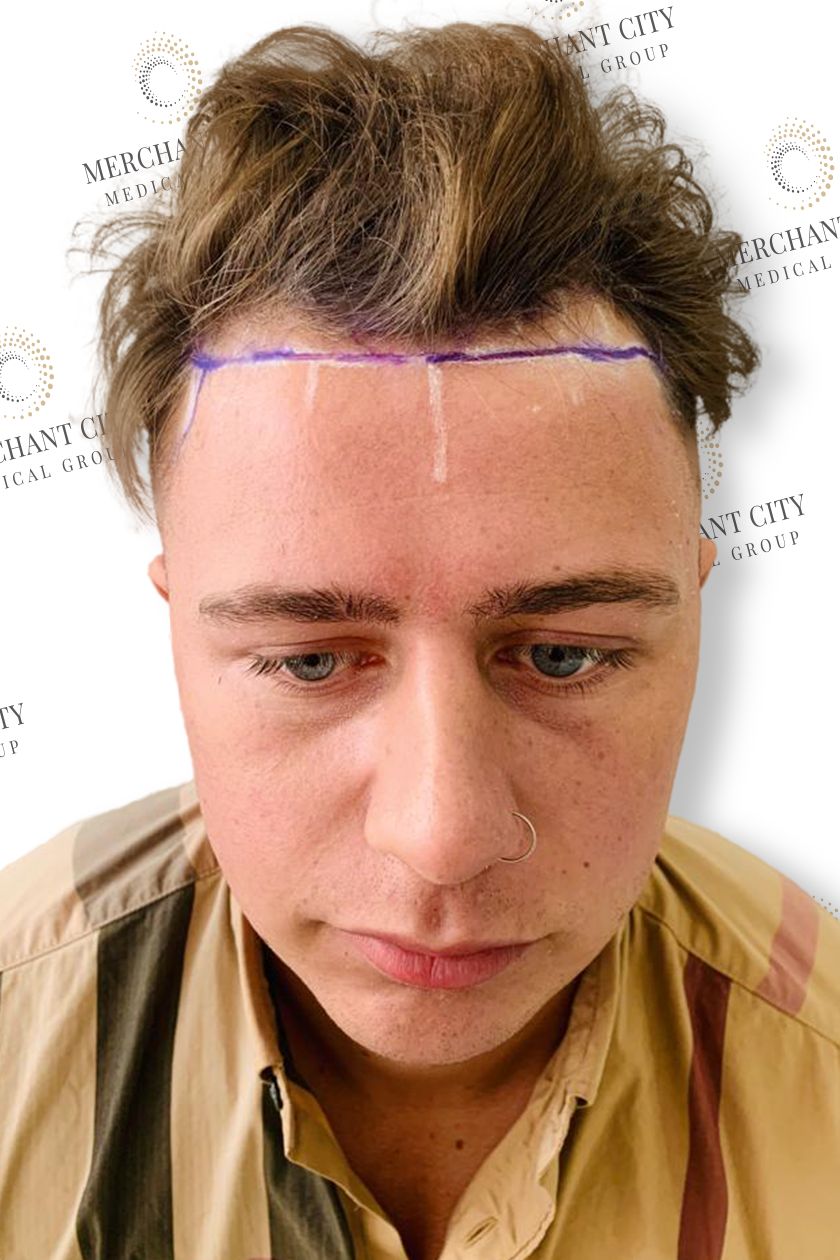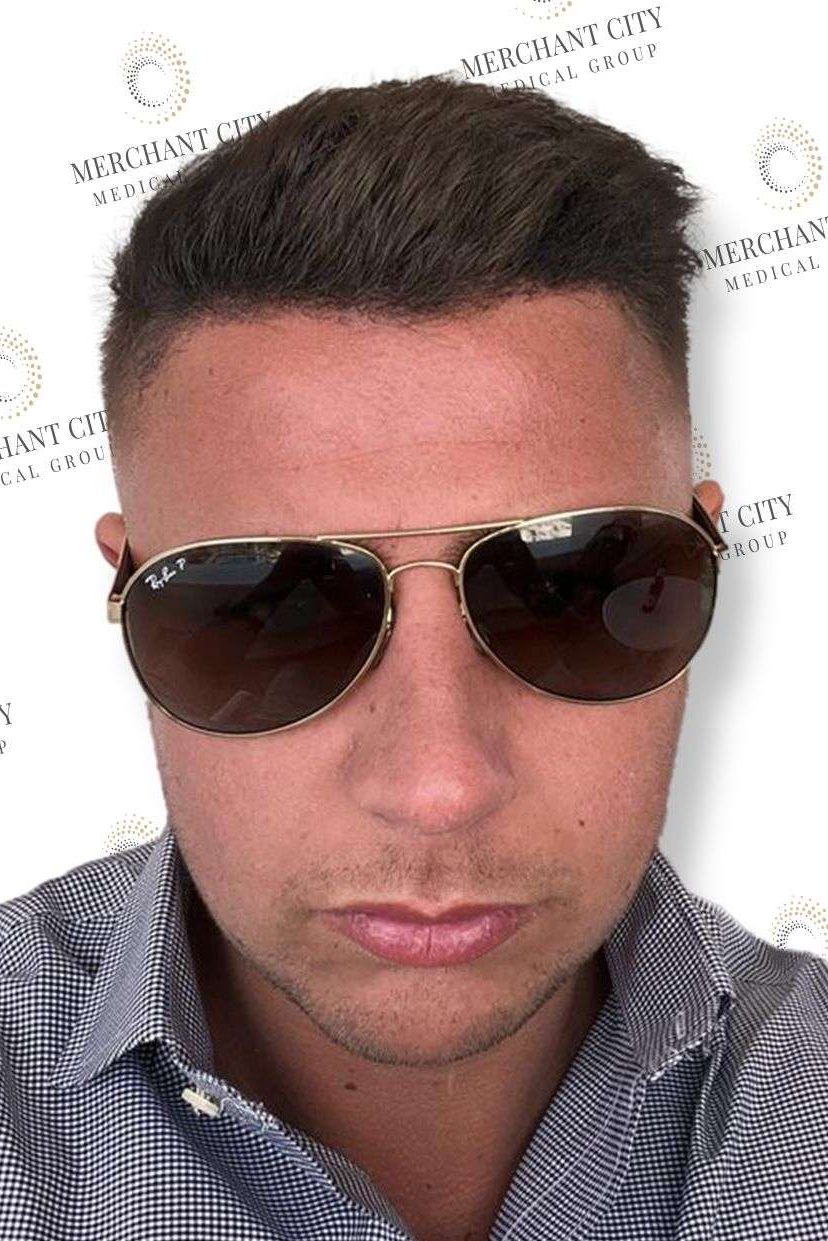
Are Hair Transplants Permanent?

A simplified hair transplant timeline
Quick facts: Did you know everyone experiences a degree of hair loss, about 100 hairs a day?
When the term “hair transplants” comes to mind, you might conjure images of the patchy, conspicuous hair plugs from years ago. However, the landscape of hair transplants has evolved significantly, especially in the last decade.
Hair transplantation, or hair restoration, is an outpatient procedure leveraging micrografting technology. This technique involves relocating your hair follicles to areas of your scalp experiencing thinning. The outcomes of a hair transplant exhibit enduring visibility and are widely acknowledged as permanent. While the procedure demands time and includes a healing and recovery phase, it has proven effective.
Typically, individuals with notable hair thinning are ideal candidates for this transformative procedure.
But the question is;
Are Hair Transplants Permanent?
Yes, they are!
All individuals looking for hair transplants contemplate whether the results last permanently. In hair restoration, the term “permanent” doesn’t always mean forever.
Nature of Transplanted Hair
The hair follicles transplanted during a hair restoration procedure are typically taken from the rear or sides of the patient’s scalp, where hair is genetically resistant to balding. These transplanted follicles are more likely to retain their original characteristics and resist the effects of male pattern baldness.
Genetic Factors
While transplanted hair is less prone to balding, genetic factors can influence the overall longevity of the results.
If an individual has a strong family history of advanced hair loss, the native hair surrounding the transplanted area may continue to thin over time.
Ageing Process
Hair transplant results can be affected by the natural aging process.
As individuals age, the texture and colour of their hair may change.
While the transplanted hair may remain, the overall appearance might be influenced by the aging of the surrounding hair and skin.
Maintenance and Care
Proper post-transplant care is essential for long-lasting results. Following the surgeon’s recommendations for medications, shampoos, and other care instructions can contribute to the health and longevity of the transplanted hair.
Lifestyle and Health Factors
Factors such as stress, nutritional deficiencies, and certain health conditions can impact the overall health of hair, including transplanted hair. Maintaining a healthy lifestyle and treating any past health issues can contribute to the long-term success of a hair transplant.
Ongoing Hair Loss Treatment
Some individuals may choose to use additional medical treatments, such as minoxidil or finasteride, to prevent further hair loss and support the longevity of the transplanted hair. Consultation with a healthcare expert is essential to determine the appropriateness of such treatments.
All the above factors heavily impact the permanency and natural appearance of the results.
Understanding Permanent in the Context of Hair Transplants
When we say a hair transplant is permanent, we mean that the relocated hair follicles will continue to grow.
However, it’s crucial to recognize that the term doesn’t imply eternal immutability.
Like all hair follicles, transplanted ones have a natural lifecycle, and their productivity may gradually diminish over time.
Certainly, let’s delve further into the unalterable movement of hair follicles in the context of hair transplantation:
Grafted Follicles’ Permanence
Hair transplantation involves surgical relocation of hair follicles from a donor site (typically the rear or sides of the scalp) to the recipient area with hair loss has occurred.
The procedure is irreversible once these follicles are grafted into new positions.
The transplanted follicles maintain their original characteristics, including resistance to the effects of dihydrotestosterone (DHT), a hormone linked to hair loss.
The image below demonstrates a patient’s before and after scenario after 12 months of receiving 2,190 grafts.


- 2,190 Grafts
- 12 Months Post Op


- 2,190 Grafts
- 12 Months Post Op


- 2,453 Grafts
- 10 Months Post Op
No Reversal to the Original Location
It’s important for individuals to understand that there is no method or procedure to reverse the relocation of hair follicles to their original locations.
Once the transplant is performed, the follicles are firmly anchored in their new positions and continue to grow hair for an extended period.
Permanency for Natural Growth
The permanency of the relocation process is a main factor in the success of hair transplantation. The transplanted hair follows the natural growth cycle, including the anagen (growth), catagen (transitional), and telogen (resting) phases.
This allows the transplanted hair to mimic the natural growth pattern, contributing to a more authentic and enduring result.
Endurance and Adaptation
Transplanted hair follicles are remarkably resilient. Once they adapt to their new environment, they tend to endure for a significant period. Their resistance to the balding process and the permanence of their relocation make them a reliable and lasting answer for individuals seeking to restore their hair.
Post-Transplant Care
While the follicular relocation itself is permanent, the overall success of a hair transplant can also depend on the care and maintenance practices post-surgery. Adhering to the surgeon’s post-transplant care instructions is crucial for optimal healing and the long-term viability of the transplanted hair.
The Journey to Permanency: Healing and Growth
The healing journey commences once the hair follicles are grafted into areas with thinning hair.
Initial shedding during the first three months is entirely normal.
The complete healing process spans from 6 to 12 months.
The transplanted follicles kick-start hair growth post-healing, effectively filling in previously bare areas on your scalp.
This new hair is a natural continuation and will persist as you age.
The unalterable movement of follicles
It’s crucial to note that the relocation of hair follicles is permanent.
Once they are grafted into new positions, there’s no reversing this process to their original location.
This permanency is what allows transplanted hair to endure and grow naturally.
Lifespan of Transplanted Follicles
While the movement of hair follicles is permanent, their productivity may follow the natural course of all hair follicles.
Over time, there might be a gradual reduction in the amount of hair produced by the transplanted follicles.
This is a normal aspect of the natural lifecycle of hair.
Choosing the Right Clinic for Long-Lasting Results
Selecting the right clinic is paramount for a transformative and long-lasting hair transplant.
Merchant City Medical Group stands out as a UK and European leader. It offers expertise, precision, and a commitment to enduring results.
As you journey to transform your tresses, trust in the excellence that defines Merchant City Medical Group.
In conclusion, while the term “permanent” in hair transplants signifies enduring growth, it’s essential to acknowledge the natural lifecycle of hair follicles.
A well-executed hair transplant and proper aftercare can yield results that last for years, offering a renewed sense of confidence and aesthetic satisfaction.
Book a free online consultation with us today.

